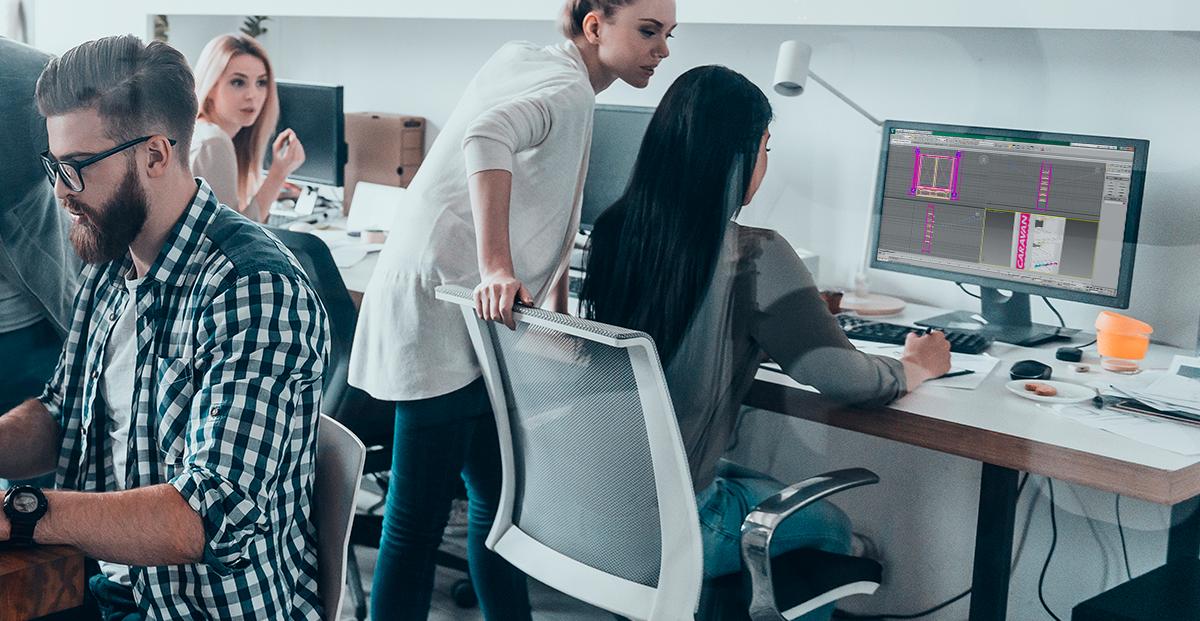
Continuing with our series of articles on the process of creating, designing and manufacturing metal display stands at Manufacturas Metalúrgicas RSL, we now delve into the following key stages after the initial interview with the client.
In our first article, entitled “The Process of creating metal displays stands at RSL: The Interview with the client”, we showed you how we gathered essential information to meet the client’s specific needs, laying the foundation for a successful design.
In this second installment, we focus on the crucial steps of Design Definition and Prototype Development. These phases are critical to transforming client ideas and requirements into a tangible, functional product. Through a meticulous process of preliminary design, material selection, prototyping, and testing, we ensure that each display not only meets client expectations, but is also durable and aesthetically pleasing.
Join us as we explore in detail how at RSL we turn initial concepts into high-quality metal display stands, ready to be manufactured and deployed in a variety of retail environments.
DEFINITION OF DESIGN
With all the information gathered during the client interview, the design team starts working on creating the display stand. This step is crucial to transform the client's ideas and requirements into a visual and functional concept. Below are the main stages of this process:
Preliminary design:
Initial sketches: Designers create hand or digital sketches to visualize initial ideas. These sketches capture the general shape and structure of the display stand.
3D Models: Once initial sketches are approved, three-dimensional models are developed using computer-aided design software. 3D models allow for more accurate visualization of the display from multiple angles, making it easier to understand the design and detect potential structural issues.
Selection of colors and materials:
Aesthetic and Functional Considerations: Materials are chosen that are not only aesthetically pleasing, but also durable and suitable for the weight and type of products to be displayed. The selection includes a variety of options in addition to the metals used, such as woods, plastics, and specific finishes.
Other metallic finishes: In the case of metallic finishes, materials such as stainless steel, aluminum or painted iron can be considered, each with its own durability and appearance characteristics.
Brand compatibility: Colors and materials should align with the client’s brand identity, ensuring the display reinforces the company’s image.
Client Feedback:
Presentation of preliminary designs: Preliminary designs, including 3D models and material proposals, are presented to the client for feedback. This step is critical to ensure that the design meets the client's expectations and requirements.
Review and adjustments: Based on the feedback received, any necessary adjustments are made. This process may include changes to the structure, colors, materials, or any other aspect of the design that the client deems necessary.

PROTOTYPE DEVELOPMENT
Once the final design has been approved by the client, a prototype is created. This step is essential to assess the feasibility of the design and to carry out practical tests.
Prototype manufacturing:
Use of selected materials: The prototype is built using the materials selected during the design phase. This ensures that the prototype is a faithful representation of the final product.
Manufacturing techniques: Depending on the materials and design, various manufacturing techniques are used, such as laser cutting, 3D printing, welding and manual assembly. These techniques allow for the creation of a precise and detailed prototype.
Testing and Adjustments:
Functionality and aesthetics evaluation: The prototype is subjected to a series of tests to ensure that it meets all of the client's specifications. These tests may include evaluation of stability, durability, ease of assembly, and overall appearance.
Problem Identification: During testing, any issues or areas for improvement are identified. These may include adjustments to the structure, changes to materials, or modifications to the design to improve functionality.
Error correction: Any issues detected are corrected before proceeding to mass production. This step ensures that the final product is of high quality and meets all customer expectations.
By completing these design definition and prototype development phases, a solid foundation is established for mass production of the display stand, ensuring that the final product is aesthetically pleasing, functional and durable.


